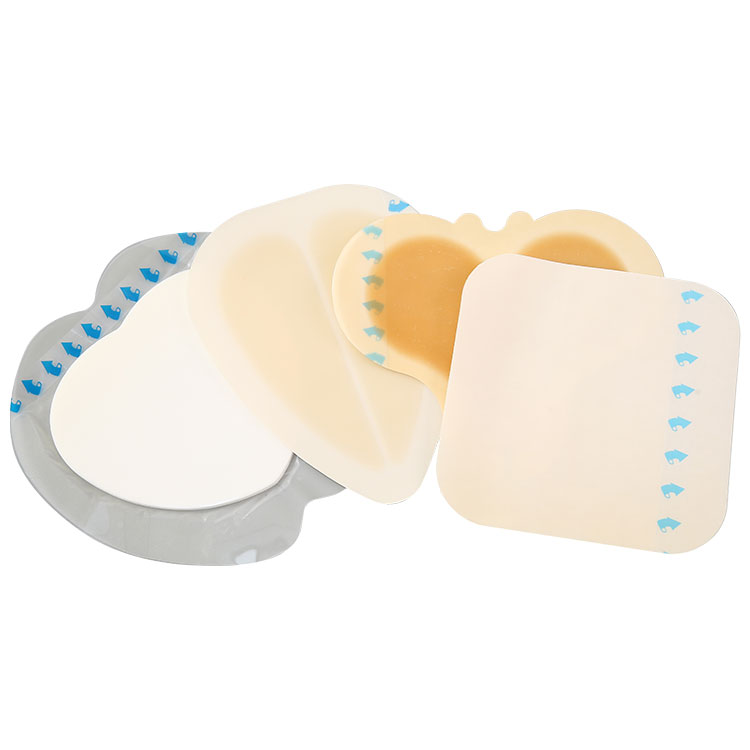What Makes Hydrocolloid Bandages a Smarter Choice for Modern Wound Care?
2025-11-14
Hydrocolloid bandages have become a widely preferred option in modern wound management due to their ability to create a moist, protective environment that accelerates the natural healing process. As demand grows across healthcare, personal care, and consumer first-aid sectors, the focus increasingly shifts toward understanding what hydrocolloid bandages are, why they perform better than many traditional dressings, and how they contribute to the future of wound-care innovation.
What Are Hydrocolloid Bandages and How Do They Work?
Hydrocolloid bandages are advanced wound dressings designed to protect injuries while supporting optimal moisture levels for faster and cleaner healing. These dressings contain gel-forming agents—typically pectin, gelatin, or carboxymethylcellulose—that interact with wound exudate to create a soft, cushioning gel. This gel forms a moist healing environment that reduces scabbing, enhances tissue regeneration, and minimizes the risk of contamination.
Key Features and Mechanism
Hydrocolloid bandages adhere securely to the skin without sticking to the wound bed. When exudate is absorbed, the hydrocolloid material expands into a gel that maintains moisture and creates a barrier against water, bacteria, and external friction. This design also reduces dressing change frequency, making hydrocolloid bandages a convenient and effective solution in daily wound-care scenarios.
Typical Applications
-
Minor cuts and abrasions
-
Blisters caused by friction (heels, toes, hands)
-
Superficial burns
-
Pressure ulcers (non-infected)
-
Post-dermatological treatment protection
The versatility of hydrocolloid dressings allows them to be used across various personal and clinical environments, from sports and outdoor activities to home first-aid and professional medical settings.
Product Parameters (Professional Specification Overview)
| Parameter Category | Description |
|---|---|
| Material Composition | Hydrocolloid layer (CMC, gelatin, pectin), polyurethane film backing |
| Thickness Range | 0.3–1.8 mm depending on size and function |
| Available Shapes | Square, round, oval, heel-shaped, finger-shaped |
| Size Options | 2×2 cm, 4×4 cm, 6×6 cm, 10×10 cm (custom sizes available) |
| Moisture Vapor Transmission Rate (MVTR) | 500–1600 g/m²/24h |
| Adhesion Strength | Medium-to-strong skin adhesion |
| Water Resistance | Fully water-resistant exterior film |
| Intended Usage Duration | 24–72 hours per application |
| Color | Skin-tone or transparent PU |
| Packaging | Sterile sealed pouch, medical-grade wrapping |
These parameters illustrate the technical structure behind hydrocolloid bandages, emphasizing how they differ from simple adhesive bandages. Their medical-grade design allows them to remain effective for extended periods while providing superior protection and moisture management.
Why Are Hydrocolloid Bandages Considered More Effective in Wound Care?
Understanding the advantages of hydrocolloid bandages involves examining their physical performance, protective capabilities, and impact on overall healing quality. Compared with traditional gauze or basic adhesive bandages, hydrocolloid dressings offer enhanced benefits that align with modern wound-care standards.
Why Does Moist Healing Matter?
A moist wound environment plays a crucial role in supporting natural healing. Hydrocolloid bandages excel in maintaining this environment by:
-
Preventing scab formation, allowing skin cells to regenerate more quickly
-
Minimizing pain by reducing the risk of wound drying or cracking
-
Protecting nerve endings to reduce discomfort during movement
-
Supporting cleaner epithelial growth for smoother scar outcomes
This approach aligns with widely recognized wound-care principles that emphasize moisture balance over dry healing.
Why Are Hydrocolloid Bandages More Protective?
Hydrocolloid dressings create a semi-occlusive barrier that shields against:
-
Bacteria
-
Water and sweat
-
Dirt and external friction
-
Repeated irritation caused by shoes or clothing
Their durable exterior film reduces the likelihood of contamination, which is especially important for blisters, burns, and small open wounds.
Enhanced Durability and Stability
Hydrocolloid bandages typically remain securely in place for several days at a time. Because they adhere strongly to surrounding skin while cushioning the wound, they are especially effective in high-friction areas such as:
-
Heels
-
Toes
-
Ankles
-
Elbows
-
Fingers
This makes them particularly suitable for athletes, outdoor enthusiasts, and daily use on the feet and hands.
Aesthetic and Comfort Advantage
Hydrocolloid bandages are generally skin-toned or translucent, offering a discreet appearance. Their soft material conforms closely to the skin, creating a comfortable, barely-noticeable finish. This level of comfort enhances user satisfaction, making hydrocolloid bandages a preferred modern choice for both adults and children.
How Are Hydrocolloid Bandages Used and What Are Their Practical Benefits?
Understanding how hydrocolloid bandages function in real-life scenarios helps consumers and buyers evaluate their practicality and performance. They provide clear advantages across clinical, personal, and consumer product applications.
How Should Hydrocolloid Bandages Be Applied?
-
Cleanse the wound with mild soap or saline.
-
Ensure the surrounding skin is dry before application.
-
Select an appropriate size that covers the wound and 1–2 cm of surrounding skin.
-
Apply the bandage smoothly, avoiding air bubbles.
-
Leave the bandage undisturbed until it naturally begins to peel at the edges.
This easy application routine helps reduce handling contamination and supports uninterrupted healing.
How Do Hydrocolloid Bandages Improve Healing Outcomes?
Their gel-forming reaction creates a cushioned, sealed environment that:
-
Absorbs exudate efficiently
-
Encourages natural collagen development
-
Minimizes scar formation
-
Reduces healing time
-
Isolates the wound from further irritation
Users often report rapid improvement, especially when treating friction blisters or small injuries on the feet.
How Do They Contribute to Cost-Effective Wound Management?
Hydrocolloid bandages reduce the need for frequent dressing changes. Their long-lasting structure means:
-
Fewer replacements
-
Lower total material cost
-
Less time required for wound maintenance
This makes hydrocolloid technology particularly beneficial in clinical settings, travel first-aid, and long-term homecare.
What Future Trends Are Shaping Hydrocolloid Bandage Innovation?
Hydrocolloid technology continues to evolve in response to consumer expectations, manufacturing advances, and medical research. The global market for advanced wound dressings is expanding rapidly, driving manufacturers to develop improved materials, more efficient absorption capability, and enhanced comfort.
Trend 1: Thinner and More Flexible Materials
Modern hydrocolloid bandages are becoming:
-
Lighter
-
More breathable
-
Better suited for sensitive skin
New formulations aim for maximum comfort without compromising absorption capacity.
Trend 2: Larger Variety of Shapes and Functional Designs
To meet diverse needs, manufacturers are producing specialized designs such as:
-
Heel-shaped blister bandages
-
Finger-wrap hydrocolloids
-
Nose and face patches for post-cosmetic procedures
-
Extra-strong adhesion options for sports
This diversification will continue expanding as hydrocolloid usage broadens.
Trend 3: Enhanced Transparency and Aesthetic Features
Consumers increasingly prefer dressings that blend with the skin. Transparent outer films and thinner hydrocolloid layers support discreet, daily wear.
Trend 4: Improving Absorption and Wear Duration
Future developments aim to strengthen:
-
Extended wear time
-
Exudate absorption capacity
-
Resistance to water and sweat
These advancements will elevate hydrocolloid bandages to even higher performance standards.
Trend 5: Rising Demand in Beauty and Dermatology
Hydrocolloid technology is gaining traction in:
-
Acne patches
-
Cosmetic procedure aftercare
-
Minimally invasive treatment protection
This trend indicates hydrocolloids will remain a foundation in personal care and medical skincare products.
FAQ Section (Two Common Questions)
Q1: Can hydrocolloid bandages be used on infected wounds?
A1: Hydrocolloid bandages are not recommended for infected wounds because the sealed environment may trap bacteria and worsen the infection. They are best suited for clean, non-infected wounds with mild-to-moderate exudate. If infection is suspected—such as increased redness, swelling, warmth, or pus—professional medical advice should be sought before applying any occlusive dressing.
Q2: Why does a hydrocolloid bandage appear white or swollen after some time?
A2: The white or swollen appearance is caused by the hydrocolloid material absorbing exudate and converting it into a gel. This reaction indicates the bandage is working properly by maintaining moisture, cushioning the wound, and protecting it from contamination. The change in color or texture is normal and usually signals that the dressing may soon be ready for replacement.
Conclusion
Hydrocolloid bandages have established themselves as an essential component of modern wound care. Through their moisture-retentive technology, protective barrier function, and superior comfort, they support healthier and faster healing compared to traditional dressings. Their expanding role in medical care, sports protection, and personal skincare highlights the importance of high-quality hydrocolloid products in everyday health management. As the industry continues to move toward more advanced, flexible, and specialized materials, brands committed to innovation—such as YTL—will play a leading role in shaping the future of hydrocolloid wound-care solutions.
For inquiries, product information, or business cooperation, contact us to learn more about professional hydrocolloid bandage solutions tailored to diverse global markets.



